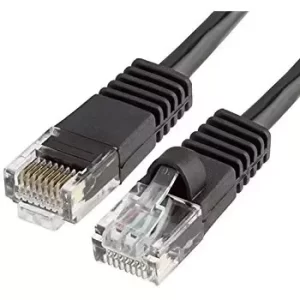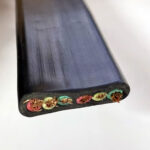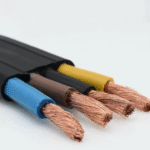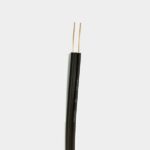If you're setting up a wired network or shopping for cables, you may come across the terms LAN cable and Ethernet cable. They’re often used interchangeably, but are they really the same thing? Let's break it down simply.

LAN vs Ethernet Cable
🧠 Quick Answer: LAN Cable vs. Ethernet Cable
Ethernet Cable: A type of cable used to connect network devices (like PCs, routers, and switches) using the Ethernet protocol.
LAN Cable: A general term that refers to any cable used in a Local Area Network—including Ethernet cables.
🔄 So, all Ethernet cables are LAN cables, but not all LAN cables are Ethernet cables.
🔍 What Is an Ethernet Cable?
An Ethernet cable is a standardized cable used to transmit data in a wired network. Common types include:
Cat5e – For up to 1 Gbps over 100 meters
Cat6 – Up to 10 Gbps over short distances (55m)
Cat6a/Cat7 – Shielded for better performance in noisy environments
Ethernet cables use RJ45 connectors and follow specific wiring standards (like T568A or T568B).
📡 What Is a LAN Cable?
LAN stands for Local Area Network—the network itself. So a 'LAN cable' could refer to:
An Ethernet cable (most common)
A fiber optic cable (used in advanced networks)
Even a coaxial cable in legacy LANs
But in most modern conversations, a LAN cable = Ethernet cable.
💡 Which Term Should You Use?
Use 'Ethernet cable' when specifying the exact type (Cat5e, Cat6, etc.)
Use 'LAN cable' when referring generally to cables used in a local network setup
🏗️ Choosing the Right Ethernet (LAN) Cable for Your Network
| Cable Type | Max Speed | Shielding | Best For |
|---|---|---|---|
| Cat5e | 1 Gbps | No | Home/office use |
| Cat6 | 10 Gbps | Partial | Gaming, streaming |
| Cat6a | 10 Gbps | Yes | Business networks |
| Cat7/8 | 10–40 Gbps | Advanced | Data centers, high-speed environments |
🚀 Final Thoughts
There's no need to overthink “LAN cable vs Ethernet cable”—in most real-world cases, they refer to the same thing: a twisted pair cable used to wire up your network.
If you're building or upgrading your setup, stick with Cat6 or higher to future-proof your connection.





